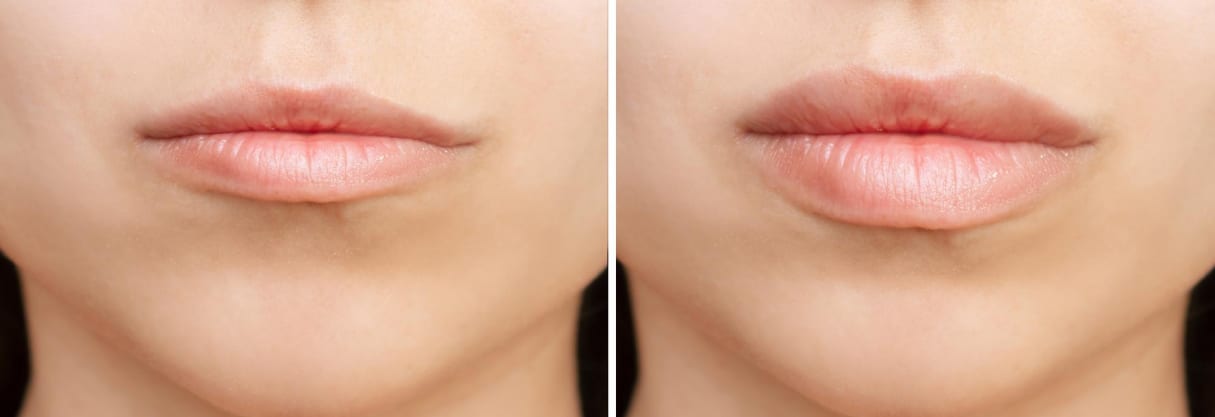
Sometimes it can be difficult to make a meaningful comparison between injectable dermal fillers. Although there are a wide variety of injectable fillers available, a large majority of them have little or no high-quality randomised controlled trials to support their use. This results in a lack of guidelines for both the efficacy and safety of these products. Fortunately, the brands of hyaluronic acid dermal fillers that will be discussed in this article, Teosyal and Juvederm, have been shown to be beneficial to patients.
Teosyal is a brand of hyaluronic acid dermal fillers manufactured by Teoxane Laboratories. Their product line consists of the Classic line of fillers and the PureSense line (these fillers include lidocaine, a local anaesthetic agent that improves patient comfort during the injection procedure), Teosyal First Line, Global Action, Deep Lines, Kiss and Ultra Deep. This is not a complete list of their products, as the products sold vary from country to country. As their names suggest, Teosyal fillers have different clinical applications, as they differ in hyaluronic acid content and level of cross-linking, which are important factors in determining the character of hyaluronic acid dermal fillers. The Teosyal family consists of easy-to-inject hyaluronic acid dermal fillers, and with Teosyal RHA, their newly launched product family, they aim to produce more models for specific indications to provide better results.
Juvederm fillers, on the other hand, are manufactured by Allergan, which is headquartered in Dublin, Ireland. There are two lines of Juvederm products: one using Hylacross technology and one using Vycross technology. Both Hylacross and Vycross are patented cross-linking technologies.
Juvederm Ultra and Ultra Plus are from the Hylacross product line and focus primarily on the treatment of the lips, nasolabial folds and marionette lines. Juvederm Ultra and Ultra Plus are suitable for these indications due to their high cohesiveness, which plays a crucial role in their ability to lift; the high cohesiveness of Ultra Plus, due to increased cross-linking, also helps to make it more effective in terms of the aforementioned indications. These two fillers are also made with high molecular weight hyaluronic acid which, in that sense, attracts water at a much higher rate than Vycross products. The higher concentration of hyaluronic acid also increases the duration of its action.
Vycross fillers include Juvederm Voluma, Vollure and Volbella and have much more specific uses than their Hylacross counterparts, due to their unique initial malleability, which is only possible because they have a lower cohesiveness than Hylacross products. Vycross products are composed of both low and high-molecular weight hyaluronic acid, a combination that results in less gel swelling due to less water absorption.
The differences between the two brands of fillers are few. However, both fillers produce satisfactory results when compared to other hyaluronic acid-based fillers.
A high-quality randomised clinical trial compared Teosyal Deep Lines with another hyaluronic acid-based filler in 60 participants with moderate to severe nasolabial folds. Both products were effective immediately after injection and had high durability over time. Although the two products were comparable in terms of results, patient tolerance and side effects, more participants preferred the results of Teosyal Deep Lines over the other filler.
Voluma is the product of choice when it comes to lifting and volumising, especially for the correction of volume deficits in the mid-face. Vollure can be an excellent choice for treatment of the peribuccal region, forehead and eyebrows, while Volbella is suitable for fine line filler because it is soft and malleable. There is convincing evidence regarding the efficacy and safety of Juvederm fillers from a randomised, double-blind, multicentre clinical trial by Baumann et al. conducted in 2006. This trial compared bovine collagen to Juvederm Ultra and Ultra Plus in the treatment of the nasolabial fold, in which Juvederm fillers had greater product longevity in patients with local injection site-related reactions compared to those treated with bovine collagen. Subsequent published data on Juvederm fillers continued to show consistently promising results, in line with other hyaluronic acid dermal fillers.
Many physicians discuss the similarities between the two brands of fillers, given that they have similar mechanisms of action, ingredients and duration of action. In conclusion, both Teosyal and Juvederm fillers are very similar in terms of efficacy and safety. Either brand can help achieve the desired appearance. Perhaps the deciding factor between these two brands lies more in the practitioner’s comfort and experience with one brand or the other.
*Disclaimer: The content of this article should not be construed as medical advice, but for informational purposes only. Nuderma staff does not review any of these articles for medical validity. The opinions expressed in this article are not endorsed by Nuderma. Please always consult your physician for professional medical advice.
Join our newsletter to receive latest news and offers

Medicle MD Ltd
Reg. Number: 14317237
Address: 27 Old Gloucester Street,
WC1N 3AX London,
United Kingdom